Transmission for Renewables: Cheaper and Greener Than Natural Gas Pipelines
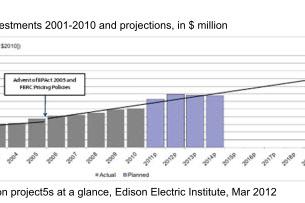
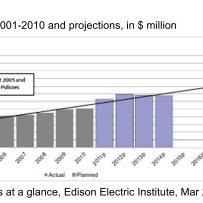
Reducing carbon emissions, boosting energy and water resource efficiency, creating green jobs and boosting local economies, and reducing waste and the potential for conflicts – numerous studies, and actual results – have shown the substantial triple bottom line benefits of bringing renewable energy systems and power transmission infrastructure online.
When it comes to energy, the U.S. has thrived on fossil fuels, however. Expanding to become the largest, most profitable multinational businesses in history, U.S. oil and gas companies have conveyed dependence on, as well as the costs and benefits of, these fossil fuels globally. Along the way, securing steady, affordable supplies of oil and natural gas became the central pillar of U.S. national security, as well as energy, policy.
Our ongoing dependence on, and affinity for, oil and natural gas shows through clearly in numerous instances, one of the most controversial of which is the proposed construction of Keystone XL, as well as numerous other natural gas pipelines. According to recent industry-unaffiliated studies, however, investing in renewable energy transmission infrastructure would not only be better from environmental and social perspectives, but it would also be a lot cheaper and give the U.S. a much bigger bang for its energy buck.
Choosing among energy alternatives
Fossil fuel industry participants and supporters continue to actively oppose government policy initiatives that would support rapid development and deployment of clean, renewable energy. They fight to drastically reduce liabilities imposed on them for the environmental pollution and damage to critical ecosystems, human health and well-being they have caused. They generously fund dubious research, public relations and media campaigns that strive to refute scientific findings contrary to their narrow self-interests.
Fossil fuel industry participants and supporters assert there are no real, economically viable alternatives to coal, oil and natural gas, whether for electricity generation, heating and cooling, or transportation. Actual renewable energy industry market performance and results demonstrate otherwise.
Offering more in the way of contradictory evidence, the Union of Concerned Scientists' (UCS) Climate & Energy Program senior analyst Mike Jacobs recently made a quick comparison of recent studies which show that making the investment needed to achieve 80 percent renewable electricity supply would not only be much cheaper than making the natural gas pipeline investments the industry says the U.S. requires, it would result in much greater new power generation capacity and at the same time drastically reduce carbon dioxide (CO2) emissions.
Fracturing of massive shale deposits (“fracking”) to obtain natural gas and oil has changed the supply-demand balance for these fossil fuels and the energy and geopolitical outlook in the U.S. and beyond. Fracking comes with a host of negative consequences, including intensive use of water resources, water and land pollution, and heightened carbon emissions, however.
Pioneering climate scientist-turned-political activist James Hansen has stated that building the Keystone XL pipeline would be “game over” for any chance society has of avoiding potentially catastrophic climate change.
The worst effects of climate change can still be avoided, and there are viable, much better ways to power development, economies and societies, proponents of making a rapid transition off of fossil fuels to clean, renewable energy resources contend. Life, lifestyles and livelihoods would not look the same as they do today, but they would likely be healthier, more satisfying, and definitely more sustainable and environmentally conscious.
Energy transmission: Solar and wind vs. shale gas
Zooming in on spending to build natural gas pipelines versus building renewable electricity transmission infrastructure, UCS' Jacobs points out that, according to several studies, adding greater amounts of wind and solar power transmission capacity to the U.S. grid would be cheaper than building natural gas pipelines. To that should be added the substantial, and growing, avoided ecological and environmental health and safety damage and costs that come along with not fracking and not distributing shale gas and oil via pipelines or other means.
In an April 1 blog post, Jacobs highlights that two natural gas industry groups, America's Natural Gas Alliance and the INGAA Foundation, on March 18 reported the industry foresees the need for some $641 billion (in real 2012 dollars) in pipeline investments in the U.S. and Canada over the next 20 years -- about $14 billion per year.
In comparison to the $14 billion per year the natural gas industry projects will be needed in U.S. and Canadian pipeline investments by 2020, Jacobs points out that the U.S. Dept. of Energy's National Renewable Energy Laboratory (NREL) projects the renewable electricity transmission investment required to achieve 80 percent renewable energy in the U.S. by that same year would range between $6.4 billion to $8.4 billion per year, some $5.6 billion to $7.6 billion a year less.
In its “Renewable Electricity Futures Study” (RE Futures), NREL, “explores the implications and challenges of very high renewable electricity generation levels—from 30 percent up to 90 percent, focusing on 80 percent, of all U.S. electricity generation—in 2050.” Along with this would come an 80 percent reduction in national greenhouse gas emissions.
Continuing, Jacobs references three more studies that show the costs of adding more wind and solar electricity transmission capacity would be cheaper than building pipelines for the distribution of shale-fracked natural gas:
- PJM Interconnection-Eastern Interconnection Planning Collaborative (EIPC) study of renewable energy transmission costs across the entire Eastern region (39 states, 70 percent of U.S. population): $100 billion in transmission costs; 80 percent electricity sector CO2 reductions by 2050;
- Grid manager PJM Interconnection's study (13 states, 61 million people) by GE Energy Consulting estimates transmission costs to achieve 30 percent renewables by 2026 would total $13.7 billion and reduce CO2 emissions up to 40 percent;
- Edison Electric Institute (EEI) projects transmission costs over 10 years of $60.6 billion; $46.1 billion to support distribution of electricity from renewable energy sources.
These and other studies all point the way to a healthier, vital and sustainable U.S. economy and society that's well within reach, one centered on rapid deployment of a diversified mix of distributed and utility-scale renewable energy resources. Equally, if not more, convincing are the actual performance, results and triple-bottom-line benefits vital, fast-growing U.S. renewable energy, energy efficiency, and clean technology sectors are already showing.
Image credit: 4 Rivers Surveying
Graph 1: Earth Policy Institute
Boeing: Something Electric in Space


All-electric satellite propulsion is becoming a big deal, and Boeing says it is “on track” to deliver the world's first all-electric xenon-ion propulsion satellites in late 2014 or early 2015 after meeting key production milestones on its initial 702SP (small platform) satellites.
Boeing announced that it has completed static qualification testing, verification and assembly of the primary structures for 702SP inaugural customers ABS and Eutelsat, meaning the satellites are well on their way to launch. The initial contract for the satellite was signed in 2012 between Boeing and Satmex. Eutelsat acquired Satmex in January 2014.
The four 702SP communications satellites will launch in pairs, and once in orbit, they will be entirely powered and propelled by electricity, rather than relying on rockets.
The first two 702SP satellites are scheduled for launch aboard a single SpaceX Falcon 9 rocket early next year. An all-electric satellite dispenses with heavy chemical propulsion and uses electric propulsion not only to maintain itself stably in orbit over 15 years, but also to raise the satellite from where it is dropped into orbit by its carrier rocket to its final destination in geostationary orbit.
Electric propulsion is more efficient and economical: Using a fully electric propulsion system means that the 702SP won’t weigh as much at launch, which in turn will lead to fuel savings and cost savings to put the satellites into space. In addition, the stackable design of the satellites allows them to take up less space, so it’s more affordable for companies to launch several satellites into orbit.
The xenon-ion propulsion system used aboard the 702SP is one of the lighter electric-propulsion technologies on the market, maximizing the weight savings but at a price of lower thrust. The satellites will require between six and eight months to travel from where they are dropped off by the Falcon 9 to their final geostationary position.
Despite their advantages, electric satellites have yet to fully catch on with commercial operators. The main reason is that these companies are often unwilling to wait six to eight months — as opposed to a week — after a satellite’s launch for it to begin generating revenue, said David W. Thompson, chief executive of manufacturer Orbital Sciences Corp. of Dulles, Va. in a recent SpaceNews article.
The electric space race is now on: Airbus Defence and Space of Europe is offering an all-electric option this year. Thales Alenia Space will have an all-electric product starting in 2016. And Lockheed Martin Space Systems has its own all-electric design, which offers a quicker delivery to geostationary orbit but uses a heavier electric propulsion system. But for the moment, Boeing is leading the charge.
Image credit: Boeing Media 702SP satellite
Can Glad Start a National Conversation on Waste?

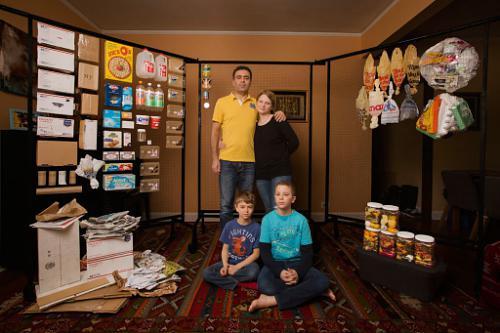
How much waste do you throw away every day? That’s the question the Glad Products Co. hopes people will ask themselves after viewing its new "Waste in Focus" photo series that peeked inside the trash, recycling and compost bins of eight families in four cities across the United States for one week.
Glad commissioned photojournalist Peter Menzel and writer Faith D’Aluisio to meet with, collect data from and photograph eight families who live in San Francisco, Atlanta, Phoenix and New York City. The participating families – each with four members – were asked to save a week’s worth of their household garbage and recycling, but were told not to change their daily behavior just for the study.
After a week, the husband-and-wife writing and photography team, who agreed to carry out the project on the condition of total independence from Glad, sorted, weighed, cleaned and recorded the waste. Then they took a portrait of each family with its discards; recycled and composted items were placed on the left side of the photo, and trash headed to landfill was positioned on the right. Each photo in the series is presented with the family’s back story, as well as data about the waste the family produced: the amount of trash, recyclables and compostables by weight and percentage of the total waste generated.
While it can be challenging to think of a company that makes trash bags as invested in waste reduction and sustainability, recyclers and environmental advocates should get behind Glad’s “Waste in Focus” project for trying to initiate a national conversation about everyday waste management practices. Waste is a particularly difficult environmental problem for individuals to wrap their heads around: We toss apple cores, empty soda bottles and junk mail in carts that we roll to the curb every week, and we never see them again.
Landfills are tucked away far from public view, so how can Americans possibly comprehend the Environmental Protection Agency’s statistic that we each throw away 4.38 pounds of garbage per person per day – a staggering total of 251 million tons a year? But much like artist Chris Jordan’s beautiful pieces that help us visualize overwhelming national consumption and disposal data, Glad’s photo series allows us to grasp the enormity of what we throw away on an individual basis.
Auditing a week’s worth of your own trash and recycling is an especially eye-opening way to discover how many natural resources you really consume and waste – and where you can improve. For example, one of the participating families, the Andersons in Phoenix, were surprised that about half of their total food waste was made up of extra edible, prepared food – not fruit peels, vegetable trimmings or bones. As a result of the study, Jana Anderson said she planned on making changes to her family’s meal planning to reduce the amount of surplus food they wasted – a decision that will also save her family money. Now imagine if other families were inspired by the “Waste in Focus” series and followed suit.
Glad’s project also draws attention to the role of city policies and programs in waste reduction, in addition to the individual consumer’s responsibility. The two families in San Francisco, which boasts comprehensive curbside recycling and organics collection programs, sent only 7 and 11 percent of their household’s waste to landfill, respectively, compared with the families in other cities who sent more than 50 percent of their waste to the dump.
Glad also set up a website, Wasteinfocus.com, to not only post the project’s photos and data, but also to provide everyday tips on waste reduction. The website includes pointers for sustainability newcomers – “In addition to newspaper, most communities accept corrugated cardboard and tissues boxes. Some even accept catalogues and phone books” – to advice on food storage that even a long-term recycler like me didn’t know – keep apples and tomatoes away from other fruits because they give off gases that accelerate spoilage.
Glad unveiled the “Waste in Focus” photo series on April 10 in New York City in a joint press conference with the New York City Department of Sanitation that announced the expansion of the city’s curbside composting program to include 100,000 more homes. In addition to being available online, the photos will be on display at New York’s Union Square on Earth Day.
Image credit: PRNewsFoto/The GLAD Products Company
Passionate about both writing and sustainability, Alexis Petru is freelance journalist based in the San Francisco Bay Area whose work has appeared on Earth911, Huffington Post and Patch.com. Prior to working as a writer, she coordinated environmental programs for Bay Area cities and counties. Connect with Alexis on Twitter at @alexispetru
EPA Port Grants Help Spur Clean Diesel, Sustainable Technologies
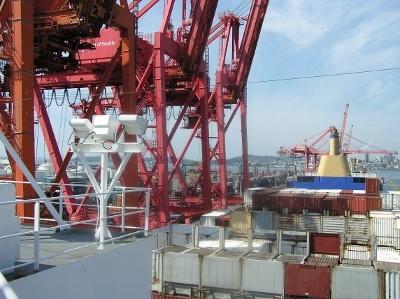

A new Environmental Protection Agency initiative will recognize U.S. ports that act to improve their environmental performance.
It’s a good idea because port areas generate some of the worst diesel emission problems in the nation, whether it’s from the cargo ships that dock at terminals without powering down their engines, the terminal equipment that services the ships, or the hundreds of trucks moving to and from terminals to load and unload the cargo.
The inaugural “Advancing Sustainable Ports” summit last week in Baltimore recognized ports that are trying to be good environmental stewards and also doled out $4.2 million in grant funding for clean diesel projects at six U.S. ports. Grant recipients included:
- Port of Seattle: $1.2 million in incentives to replace 40 older heavy-duty drayage trucks with trucks powered by 2010 or newer certified engines. The project will supplement the port’s existing truck replacement program, EPA said.
- Port Hueneme, Calif.: $500,000 to complete electrification of Wharf No. 1 and allow the port to supply shoreside power to ocean-going vessels at all three berths simultaneously, thereby reducing emissions from ship idling.
- Port of Tacoma, Wash.: $601,949 to repower a Tier 0 switcher locomotive with a Tier 3+ engine equipped with an automatic start-stop system to reduce idling.
- Maryland Port Administration: $750,000 to provide incentives to replace 35 pre-1997 model year drayage trucks in service at the Port of Baltimore with trucks powered by 2010 or newer certified engines.
- Virginia Port Authority: $750,000 to replace three Tier 1 shuttle carriers with Tier 4 hybrid diesel-electric shuttle carriers in operation at the Port of Virginia.
- City of Los Angeles Harbor Department: $469,000 to retrofit 14 pieces of cargo handling equipment with diesel particulate filters at the Port of Los Angeles.
Over the past eight months EPA has led a “national conversation” on ports to share information, goals and successes of ports in reducing emissions and improving environmental performance. With most of the country’s busiest ports located in or near large metropolitan areas, people in nearby communities can be exposed to high levels of pollution, the EPA said. “For example, diesel powered port equipment can seriously impact air quality for nearby residents and generate substantial greenhouse gas and black carbon emissions. Implementing clean air strategies at ports will reduce emissions and provide health benefits from improved air quality for workers and families who live nearby.”
The agency’s new ports initiative program will work with port authorities to develop emission measurement tools, in order to help ports better understand their energy use and environmental impact.
It’s a good start, but only $4.2 million in incentive grants? This is a huge national problem that’s going to need much more funding and port involvement.
Image: Port of Seattle by Bill DiBenedetto
Electricity Prices Fall In Europe As German Renewable Energy Output Increases
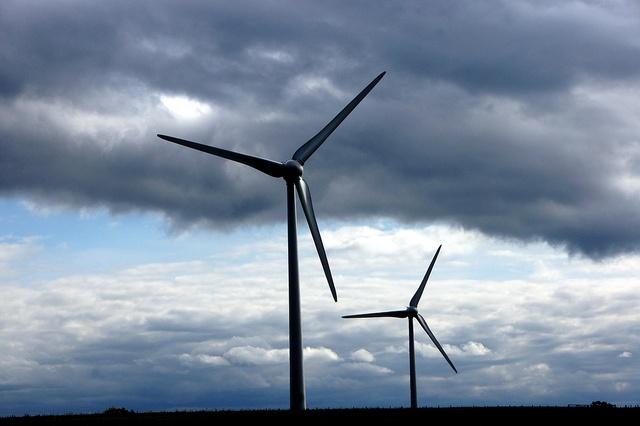

For the fifth consecutive month, electricity prices in countries neighboring Germany have decreased, recently released Platts data reveals, due in large part to increased solar and wind generation in Germany.
The Platts Continental Power Index (CONT), described as a “demand-weighted base load average of day-ahead contracts assessed in Germany, Switzerland, France, Belgium and the Netherlands,” dropped steadily in early 2014. The index decreased to €35.06 (or about $48.50) per megawatt hour in March, an 18 percent drop from February. Overall, the index is down by more than 39 percent since peaking at €50.50/MWh in November of last year.
"A mid-March surge in German wind output followed seven days of peak solar output, which rose above 20 gigawatts (GW) to a new monthly record of 23 GW on March 20," Andreas Franke, Platts managing editor of European power and gas said in a news release.Germany currently gets about 25 percent of its electricity from renewable energy, and the goal is to increase that number to at least 80 percent by 2050. German wind and solar output for the first three months of 2014 increased by 40 percent -- or 6.5 terawatt-hours -- compared with last year, according to the Platts data. Wind power increased 31 percent from the first quarter of 2013, while solar power increased 74 percent from more than a year earlier. Germany’s combined wind and solar portfolio is more than 70 gigawatts, making them the country’s largest sources of power when measured by installed capacity."German power prices for March 16 delivery turned negative as wind power output rose above 24 GW combined with stronger solar production," Franke continued. "Further along the curve, German year-ahead power prices fell below €34/MWh in March for the first time in more than nine years as the price CO2 fell drastically and coal prices retreated."
Data for the past three years from the Fraunhofer Institute shows that wind and solar power generation increased, while energy generation from natural gas fired power plants decreased significantly. Solar and wind power generation in Germany in 2013 increased by 36 percent in export surplus from 2012 levels. Photovoltaic power also increased by 44 percent from 2011 to 2012.
Reuters reported last week that German Chancellor Angela Merkel’s cabinet approved a reform measure for the country’s renewable energy law. The reform measure “will slow the growth of green energy...and force new investors in green power to take some risk,” according to Reuters. The German government wants to keep electricity affordable while allowing the renewable energy sector to grow. And growth in renewables is something that the government wants. Under the reform measure, the government wants to increase renewable energy generation to 40 to 45 percent of total electricity production by 2025 and 55 to 60 percent by 2035.
Image credit: Martin Abegglen
SolarCoin: Cryptocurrency with Value for People and Planet
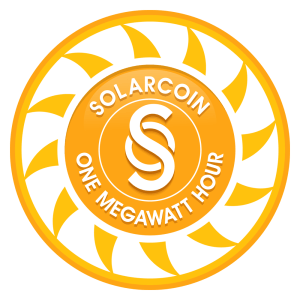

Editor's Note: This is the second post in a series on electricity-backed currency. In case you missed it, you can read the first post here.
By Sam Bliss
SolarCoin is a decentralized digital currency that we can trade person-to-person over the Internet, without PayPal or Visa playing middleman and charging fees. Each SolarCoin represents 1 megawatt-hour (MWh) of solar electricity generation.
In my first blog post about SolarCoin, I described the two "proofs of work" that back the currency: a cryptographic proof of work that secures the online currency and verifies transactions, and a proof of solar power production. That introductory piece also explains how one can claim or trade for SolarCoins, but leaves unanswered the question of why one would want to do that.
So, is SolarCoin valuable? What can we buy with it?
Money value
All currencies, including U.S. dollars and Euros, are valuable as long as a network of merchants, people and other organizations deem them valuable. But unlike the currencies with which we are required to pay our taxes, digital currencies must provide value as a complement to national currencies.
For SolarCoins to succeed as a means of exchange, we need to begin treating them like money. They must be in people's hands -- or digital wallets -- and they must be used for purchases and exchanges.
This is how Bitcoin gained value. The first famous cryptocurrency provided a decentralized, free-flowing way to do business on the Internet, so people started trading it like cash.
On a fundamental level, something has value if we think it’s important.
SolarCoins not only offer the trust associated with a block chain transaction database, but also the goodness of fossil-free, renewable energy. I think we can all agree trust and goodness are important.
Decentralized trust
To understand how digital currencies create decentralized trust, just think of the way you know trust is defined. Trust is the firm belief in the reliability, truth, ability, or strength of someone or something, according to Merriam-Webster.
In this case, it is the firm belief that SolarCoins are reliable and secure, and that the online community that holds and trades the currency cannot cheat you out of your SolarCoins or devalue SolarCoins by creating too many.
It’s decentralized because we need no central authority. Money can change hands person-to-person, and there’s no way to cheat the system -- since each SolarCoin or other digital currency is a unique piece of digital property that simply moves from one digital wallet to another within minutes of a transaction.
A public ledger -- the block chain -- records every transaction ever made in SolarCoins, which makes it impossible to get away with double-spending. This digital database enables us to make trustworthy purchases and trades over the internet without entering credit card data or going through a bank. As a result, online transaction fees can drastically decrease.
Physical trust
SolarCoins are backed by physics, not just the computing power necessary to create and secure them. Each one was originally granted to a producer of 1 MWh of solar electricity -- a unit of energy with a value to society that stays relatively steady over time.
By contrast, other digital currencies carry little intrinsic value beyond the mutual agreement that they have monetary worth. Bitcoin's price has fluctuated wildly over the past several years in part because bitcoins are not tied to anything concrete and stable (though there are other good explanations for the currency's volatility, detailed in this Washington Post article arguing that Bitcoin's value will stabilize in the future).
Advocates of the gold standard -- a system in which a currency's value is based on a set amount of gold -- believe that a tangible asset is essential to ensure the long-term price stability of currency. But unlike a precious metal, the commodity represented by SolarCoin provides real benefits to society. Electric power from the sun protects the environment and raises standards of living in energy-poor regions.
Earth goodness
One MWh of electric power produced by solar photovoltaics releases no greenhouse gases other than the emissions from manufacturing solar panels, while burning fossil fuels like natural gas or coal releases 1,500 pounds or more of carbon dioxide-equivalent emissions per MWh generated -- not counting the upstream emissions from extracting, refining and transporting the fuels. Not only is solar power climate-neutral, but it does not cause air or water pollution.
Because solar panels produce electricity without side effects to human and ecosystem health, solar energy can be produced right where it's used. Consequently, thousands of tiny solar "power plants" can make the electrical grid more resilient by reducing our reliance on massive, polluting facilities connected to cities by inefficient, expensive and vulnerable transmission lines.
Energy goodness
Electricity availability is closely tied to prosperous living. In developing countries and other areas without widespread access to energy, solar panels can bring power to the masses.
Solar electricity often replaces energy sources like kerosene lamps, diesel generators and wood-fired stoves when it's installed in places without a dependable electrical grid. This transition allows communities to discontinue purchasing and burning costly fuels, increasing quality of life with reliable power and protecting human health from harmful emissions.
Scaling up
In summary, SolarCoin has inherent value in trust and goodness. It facilitates transactional trust between strangers, frees everyday exchanges from the banking system, and rewards producers of clean and useful electric energy.
Now SolarCoin just needs a huge network of people holding and using the currency. Check out last week's blog post for instructions on how you can join the open community.
Next week's post will show how SolarCoin can achieve the popularity necessary for the currency to achieve significant monetary value. Stay tuned!
Graphic courtesy of SolarCoin
Image credit: Christoffer Riemer
Sam is an aspiring economist and writer. You can read his work at theblisspoint.org. Sam's digital wallet does not yet hold any SolarCoin thanks to his technological incompetence, but he hopes to have some 'skin in the game' soon.
Go Green or Go Home: Why Being Eco-Friendly is Good for Delivery


By Phil Dumontet
People often assume that making eco-friendly choices means spending more money. But more often than not, going green will actually save you money. Even mega corporations like Walmart are increasing profits by adopting environmentally friendly practices.
It turns out that what’s good for the earth is also good for your business and its employees, especially if you offer delivery services. Additionally, you can save on expenses by offering environmentally friendly options.
Green means speed
The most environmentally friendly modes of transportation are also the cheapest. Using scooters, bikes and Smart cars can save you loads on gas while also increasing the number of deliveries you can manage in a day.
At Dashed, about 25 percent of our restaurant deliveries are done via bicycles and scooters, with another 50 percent done by Smart cars. That means 75 percent of our deliveries are maximizing speed and minimizing environmental impact, which has given us an advantage over our competitors.
When employees make deliveries on bikes or scooters, they can find faster routes easier than in a conventional car. Alleys and smaller side roads become valid routes, and the problem of parking is completely removed. Smart cars can also fit into tighter parking spots than larger vehicles.
When you factor in better routes and fewer parking worries, that equates to faster delivery times — the most important competitive advantage you can have. Fast deliveries maximize profit and keep your customers happy.
Go green to boost morale
Going green won’t just make the environment and your customers happier, though. It will make your employees happier, too. Prioritizing the environment shows you value more than just the bottom line, and your employees appreciate that. It gives the business and the individuals who work for you a greater sense of purpose and fulfillment.
Green modes of transportation, such as bikes, are also better for morale than cars because exercise is good for people, both physically and psychologically. Using bikes for delivery means your employees will be healthier — inside and out.
Bikes and scooters also make the job more fun. Our employees enjoy friendly competition with each other to set records for the most deliveries in a day. And no one can overlook the fact that more deliveries equals more tips. Who can turn down making tips while exercising?
Not all of our deliveries are made by bike. We rent our Smart cars to those who prefer to drive but either don’t own a car or would like to use a Smart car. This offers the drivers more choices, and more choices lead to happier employees. When you take away the requirement to own a vehicle, delivery jobs also become more accessible to a greater number of people.
Go green to attract consumers
A brand’s eco reputation is becoming a growing concern for customers. People are looking for conscientious businesses to support, and establishing green practices will help you build trust within your market.
Green options are growing for both companies and consumers. We no longer have to choose between convenience and price or the environment. If you can’t “green” your delivery completely, consider even the smallest steps toward reducing your impact.
In the restaurant delivery sector, there are an increasing number of affordable green options for takeout bags, cutlery and napkins. A less visible but equally meaningful change you can make is to cut your paper use. Anything still being done on paper is an opportunity to be more environmentally responsible by switching to electronic systems. Paperless billing, online banking and emailed receipts are several ways you can cut out paper waste.
“Going green” may just sound like a trendy buzzword that isn’t worth the effort, but many environmentally conscious choices lead to more efficient systems and greater profits. Examine your delivery system, and figure out how you can go green. It will help you grow your business in ways that makes everyone — employees, customers, and you — feel good.
Image credit: Flickr/vincealongi
Phil Dumontet is the founder and CEO of DASHED, the leading restaurant delivery service in the Northeast. In 2013, DASHED was recognized as one of the fastest-growing companies in the U.S., ranking #119 nationwide and #7 in Massachusetts on Inc. Magazine’s Inc. 500 | 5000 list. Phil prides himself on the company’s industry-leading delivery times & unique partnerships with higher-end restaurants, as well as their commitment to keeping delivery green and eco-friendly.
Majority in UK favour onshore wind power over fracking


The majority of people in Britain would prefer to live near a wind farm than a fracking site, says new YouGov research commissioned by Ecotricity.
When given the choice, 62% said they would rather have a wind farm in their local council area than a fracking site, with just 19% preferring to have fracking nearby.
The research comes as Ecotricity founder Dale Vince today accused the Government of contradicting its own research on public attitudes to onshore wind.
The Department of Energy and Climate Change (DECC) has been conducting its own Public Attitudes Tracking Survey since July 2012 – with the latest results showing that 64% support onshore wind, with only 28% of people supporting fracking in the UK.
Dale Vince, Ecotricity founder, commented: “Sacrificing onshore wind for offshore wind and solar makes no economic sense, especially in these times of austerity and cuts. Onshore wind is the cheapest form of renewable energy available to us; large solar projects cost bill payers 50% more per unit of energy made, while offshore wind costs 100% more than onshore.
“We need all three forms of renewables for our long term energy security, and keeping onshore wind in the mix keeps the overall cost of green energy down.”
Europe makes landmark move towards ‘integrated reporting’


From 2017 large companies across Europe will have to include their impact on the environment, society and human rights in their annual company report.
The landmark vote by the European Parliament was welcomed by Richard Howitt MEP: “All the evidence suggests that transparency is the best way to change business behaviour. This European law will prevent corporate scandals and make a leap in the transition towards a sustainable, low-carbon economy for the future.
"By requiring the information to be included in the management statement and enabling international frameworks to be used to satisfy the law, Europe is sending a strong signal to the rest of the world advancing the global move towards integrated reporting.”
Howitt, who first proposed the legal change, commented that the exemption for small businesses meant that the new law had “the best chance of being genuinely implemented”.
The move was also welcomed by Global Reporting Initiative (GRI).
“This vote is a victory for transparency and this is a great day for the future of sustainability reporting,” said Teresa Fogelberg, Deputy Chief Executive, Global Reporting Initiative (GRI). “This agreement demonstrates the EU’s strong commitment to corporate transparency and sustainability – supporting smart, sustainable and inclusive growth, and paving the way for a sustainable global economy.”
However, Eurosif (the European Sustainable and Responsible Investment Forum) sounded a note of caution.
François Passant, executive director of Eurosif, expressed disappointment that the legislation does not go far enough: “While the text of the legislation is probably the best compromise that could be reached at this stage, it falls short in a number of areas important to sustainable and responsible investors, most notably scope and assurance. Eurosif will therefore continue to engage with policy-makers on these and work with other market forces to progress reporting practices.”
Picture credit: © Svidenovic | Dreamstime.com
To Tackle Complexity, Avoid Simplistic Thinking


Submitted by Guest Contributor
By Dr. Gilbert Probst and Dr. Andrea M. Bassi
There are several problems companies and individuals face on a daily basis, some of which are direct consequences of our actions or reactions to the situations we are facing. This post builds on the one posted last week and highlights more of the traps in which we are often caught.
Conceptual Mistake 1: Quantity of Data Predicts & Solves Problems
As previously mentioned in our blog posts, life is complex. Problems are often also complex and many factors contribute to creating the problem. Herbert Simon, a very well-known business scholar, believes we have bounded rationality. This means: yes, we are rational beings, but our rationality is limited  because we do not have all the information and cannot observe everything.
because we do not have all the information and cannot observe everything.
Consequently, many people believe complexity is inversely related to the availability of quantitative data: the more data we have, the less complex the problem is. They think an abundance of data allows us to find ultimate solutions and predict system behavior.
This implies that data allows us to slice through complexity and understand it. This would mean finding solutions to complex problems only requires detailed information about the (presumed) direct causes of these problems and about their harmful effects (Tversky & Kahneman, 1974; Heinhorn & Hogarth, 1978).
But to obtain such information, we need to make sense of our data. Focusing on only an event – What is happening today? What is happening now? – is not enough. This would only provide a temporary solution – a Band-Aid for a festering wound that is bound to cause more pain later. Finding a true solution requires delving deeper into the data.
Diving Below the Surface
Events are just the tip of the iceberg—easy to see and explore. There are underlying structures and patterns at the core of the system. These structures and patterns are the system elements that create events. If we only focus on events, we forget about the multiple variables that influence a system.
We have all experienced a solution to one problem leading to greater problems elsewhere. The most important action to take is to link the multiple variables and analyze the data deeply. Instead of tinkering with an engine in the hope of finding a solution, we take the entire engine apart.
Lehman Brothers’ collapse was the first event to focus the world’s attention on the financial crises. Nevertheless, this event did not provide decision makers with enough information about the real cause of the financial crises. It was just a symptom, not the virus (cause itself).
The collapse of Lehman Brothers was just one event in the growing concerns about the banking system’s stability, the slowdown of the  housing market and the economy as a whole. These trends all provided valuable information about the system’s previous direction.
housing market and the economy as a whole. These trends all provided valuable information about the system’s previous direction.
Conceptual Mistake 2: Fixing One Problem Fixes All
Decision making is a challenging task that, if not properly managed, can lead to the emergence of unexpected side-effects and failure – fixing just one part of that engine could still lead to bad accidents! The assumption that, once implemented, the solution will benefit the entire system and have it thriving once again, is wrong.
Implementing strategies designed to maximize the performance of part of a system, or to solve the problem of one (or a small group of) actor(s), generally leads to resistance from the other stakeholders. Conversely, an integrated approach takes the role and goals of the different actors involved in complex problems into consideration.
The Importance of Multiple Perspectives
An example of the importance of multiple perspectives and ideas for business development is Procter & Gamble's (P&G) success with its open innovation program Connect + Develop. This program consists of an Internet platform where all companies and entrepreneurs can propose new innovative business solutions to meet P&G’s needs.
This open approach to innovation provides P&G with a variety of different options. It then chooses the most valuable options and develop them in collaboration with the person(s) or company that proposed them.
With the growing availability of data and optimization already a widespread concept, decision makers generally assume that their perception of reality is universal. They are therefore inclined to use their solution for different types of problems in different contexts. In other words, they use chopsticks to eat soup—a most unsuitable tool for the context. At such times, a one-size-fits-all strategy will fail!
Three Steps to Avoiding Solutions that Don't Work
1. Define the boundaries of the problem:
First, all the factors that are not directly related to the problem should be excluded. It is very important to focus on the  main cause, its key drivers and their effect.
main cause, its key drivers and their effect.
The first step is therefore to define the boundaries. These boundaries should be sufficiently open to include the essential cause-effect relations that would be excluded if one were to only focus on a single cause. But the boundaries also need to be sufficiently narrow to avoid generalization and a loss of focus.
2. Identify the causes and effects, as well as the actors involved:
Who are the key actors that stand to benefit from a change in the system? How can they be part of the solution? What are the causes of the problem and what are the possible effects of those causes?
These are the questions that should be answered and analyzed. But beware: a single effect can be the result of multiple causes and a single cause can have multiple effects on the analyzed system. In that engine there may be small faults and all of them have to be fixed if automobile is to drive smoothly and well.
3. Analyze future behavioral paths and impacts:
Once the root of a problem is well understood, qualitative projections provide an even better understanding. Once past and current trends have been observed, the time comes to start analyzing future paths. The use of scenarios allows one to project the future and analyze it consequences.
Among others, the World Economic Forum (WEF) uses scenarios to gain foresight, to look into events that could happen in the future and to develop strategies that take these possibilities into consideration.